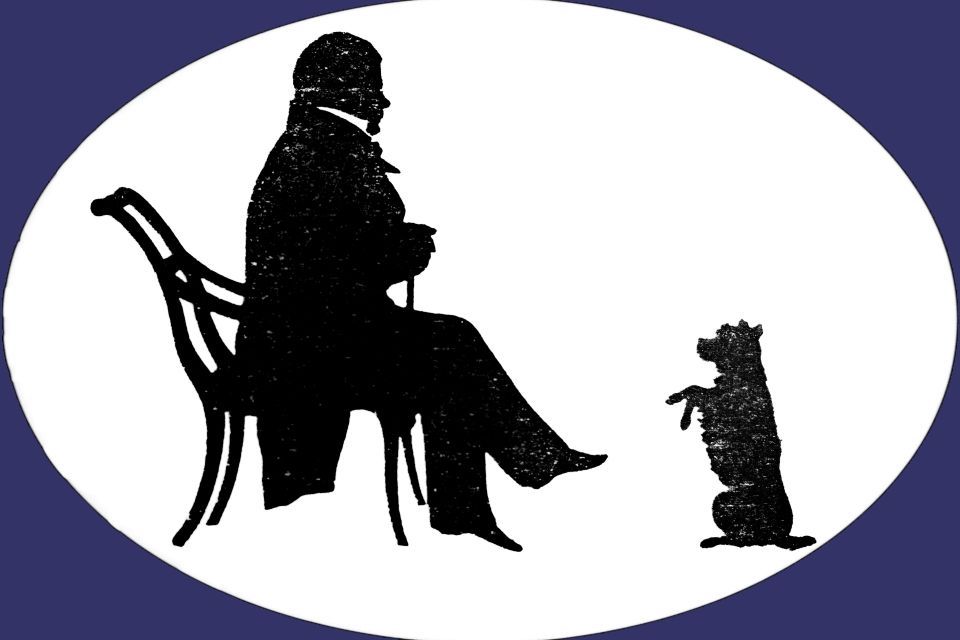The Life of Marguerite Charlotte Charpentier: Disorderly Outsider?
Thursday 7th March 2019
Summary of the Talk:
Deirdre Shepherd's talk re-evaluates the life of Marguerite Charlotte Charpentier—better known as Lady Scott, wife of Sir Walter Scott. Traditionally dismissed or maligned by male biographers, Charlotte is here reconsidered as a significant, if misunderstood, figure. Shepherd aims to recover Charlotte's voice, personality, and significance within the broader social and historical context of the late 18th and early 19th centuries.
Key Points of the Talk
1. A Misunderstood Woman
- Charlotte has been viewed as a “disorderly outsider,” often criticised for her background, habits, and personality.
- Shepherd reclaims the term “disorderly,” arguing Charlotte simply didn’t conform to early 19th-century Scottish expectations of femininity.
- Her cosmopolitan background in Georgian London and her French heritage made her visibly different—and potentially threatening—to conservative eyes.
2. Origins and Legitimacy
- Charlotte was born in Lyon, France in 1770 to Jean-François Charpentier and Elie Volaire. Rumours of her illegitimacy (linking her to Lord Downshire) are effectively disproved with strong documentary evidence.
- She was well-born and respectably baptised, with godparents including her grandfather, Pierre Charpentier.
- Charlotte’s early life was cultured and urbane—surrounded by music, education, and elite society.
3. Move to London and the Dumergue Household
- After her mother’s death in 1788, Charlotte lived with the wealthy Dumergue family in London. Dumergue was a royal dentist with deep ties to the aristocracy.
- This environment was full of intellectual and artistic activity, and Charlotte was close to Sophia Dumergue.
- Her letters show her as warm, intelligent, lively, and deeply attached to family, especially her brother Charles (Jean-David), who became successful in the East India Company.
4. Marriage to Walter Scott
- Charlotte and Scott met and married in 1797. Their relationship, though often belittled in biographies, seems to have been affectionate and stable.
- Her French manners, public presence, and refusal to conform to “invisible domestic womanhood” were seen as alien in Scottish society and often unfairly judged.
5. Health, Laudanum, and Misogyny
- Accusations of laudanum addiction have shadowed Charlotte’s legacy. While she likely took opiates, Shepherd contextualises this within standard medical practice of the time.
- Misogynistic readings interpret her use of medicine, interest in fashion, and assertiveness as flaws. Yet these may simply reflect gender bias and poor biographical practice.
6. Financial Responsibility
- Charlotte has been labelled a spendthrift, but research shows her expenses were modest relative to Scott’s extravagance.
- She ran multiple households efficiently and contributed significantly to the family’s financial stability with her own allowance from her brother.
7. The Gendered Nature of Biography
- The lecture critiques male-dominated biographical traditions that have caricatured Charlotte while mythologising Scott.
- Shepherd aligns with scholars like Carolyn Heilbrun and Hermione Lee in arguing for more balanced and contextually rich biographies of women.
Noteworthy/Interesting Points
- Charlotte’s voice survives in letters—notably those to her brother—which show her as warm, witty, and grounded. Her letter from 1817 paints a charming picture of family life at Abbotsford and her children’s growth.
- She rejected domestic invisibility, choosing instead to inhabit both private and public spheres, much as she had in London society.
- Her mother Elie was a cultured woman, likely involved in the educational side of the family’s riding academy—possibly passing musical and intellectual talents on to Charlotte.
- Charlotte’s painting (1810) offers a rare glimpse of her strength and intelligence beneath a formal, even guarded, exterior.
- Scott himself acknowledged the authenticity and warmth of their relationship, contradicting the biographers’ mythologised “first love” narrative with Williamina Belsches.
- Biographers’ misogyny: Shepherd suggests that Scott’s male biographers were unsettled by Charlotte’s “too French,” “too fashionable,” or “too assertive” ways—often reducing her to stereotypes or scandal.
Conclusion
Shepherd’s lecture is a compelling feminist re-evaluation of Charlotte Charpentier Scott, rejecting caricature and restoring dignity and complexity to a woman long marginalised by male biographers. Rather than a “disorderly outsider,” Charlotte emerges as a resilient, intelligent, and loving woman navigating personal, cultural, and historical upheaval.
Download the [transcript]
Download the [transcript]
Introduction by Prof. Peter Garside:
Today’s speaker Deirdre Shepherd lives in Edinburgh, and we’re very pleased to have her to initiate this year’s cycle of talks and other events at the Club. She has a long-standing interest in Walter Scott and completed her PhD at Edinburgh University, under the supervision of myself with guidance from the late lamented Susan Manning, on the subject of Walter Scott, James Hogg and Uncanny Testimony. (One somewhat surprising conclusion reached, as I remember it, was that Scott in some respects was personally more prone to superstitious thoughts than Hogg.) Her interests in Scotland and the supernatural in literature persist and she has taught several courses on Fiction and the Gothic for students at the University.
The present talk however will focus on Charlotte, Lady Scott and her early life in Lyons and London before marriage to Walter. In it Deirdre hopes to offer a more rounded and sympathetic picture of Charlotte than is often given, with especial reference to the accusations of illegitimacy and drug addiction that have been associated with the wife of Walter Scott.


